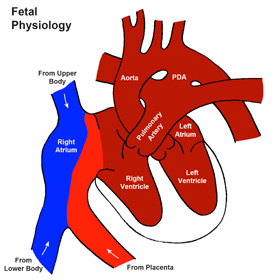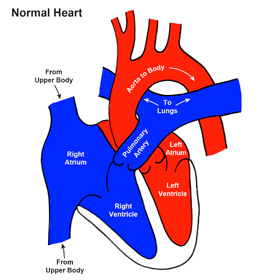Diagrams and brief descriptions of the 12 target diagnoses of critical congenital heart disease (CCHD) are given here. It is important to remember that there is a wide variability within each of the diagnoses. For example, some babies with coarctation of the aorta may become critically ill or even die within a few days after birth, yet in some people, their coarctation might go unrecognized for years. To make things more complicated, more than one of these heart problems can be present in the same baby. These diagrams aren’t meant to be a precise anatomical guide, but to give a general idea of the problems associated with each heart problem.
Helpful Terms
| Hypoplasia | Something that is too small. |
|---|---|
| Atresia | Something is missing or closed. This term is applied both to valves that won’t open and valves that never formed at all. |
| Stenosis | A narrowing in a blood vessel or a valve that won’t open as easily it should. |
| Atrium | The upper chambers of the heart that receive blood from the body or the lungs. |
| Ventricle | The lower chambers of the heart that pump blood to the lungs or the body. |

Normal Heart Connections Before Birth
Before birth, the arteries giving blood to the lungs (Pulmonary Artery) and to the body (Aorta) are connected by a large blood vessel called ductus arteriosus. This normal part of the body is designed to close in the first few days after a baby is born.
In many forms of critical congenital heart disease, the normal parts of the heart use the ductus arteriosus to help out the abnormal parts of the heart. These babies can appear to be healthy while this connection is open and one side of the heart can help the other. However, when the ductus arteriosus closes, the baby’s heart problem can show itself very quickly.
Normal Heart

Normal Heart Connections After Birth
In people with a normal heart, blood from the body which is low in oxygen (pictured here in blue) comes to the right side of the heart and is pumped to the lungs. Blood coming from the lungs containing high concentrations of oxygen (pictured here in red) comes back to the left side of the heart and is pumped to the body. In most people, the blue and red blood doesn’t ever mix. In babies with CCHD, there is mixing of the low and high oxygen blood somewhere in the heart or blood vessels (pictured in these diagrams in maroon).


